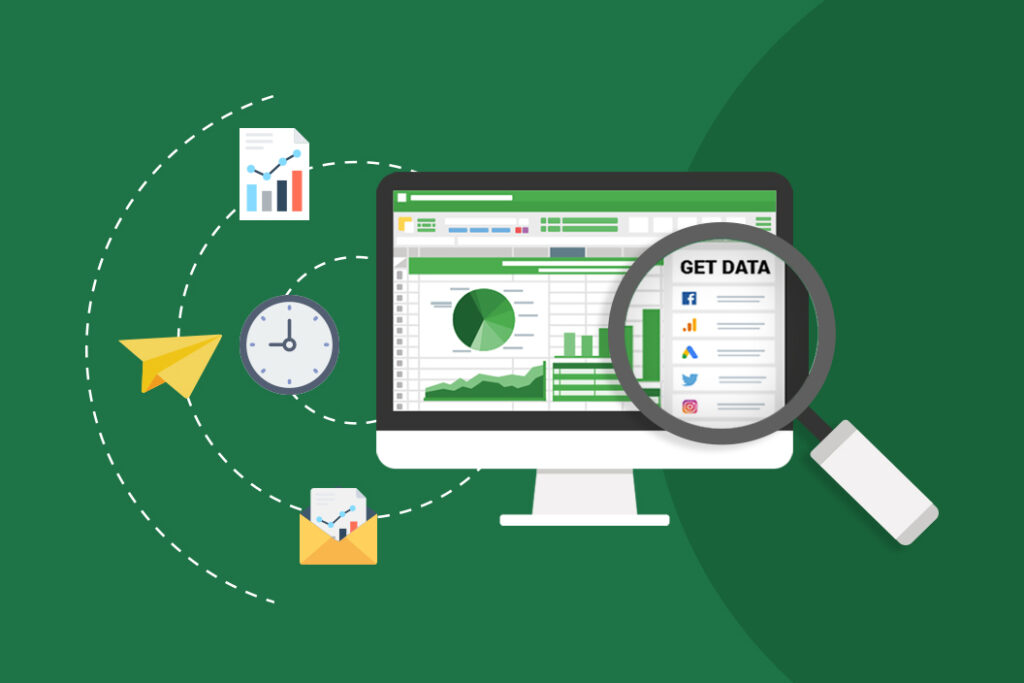Personal Career & Learning Guide for Data Analyst, Data Engineer and Data Scientist
Excel is a software commonly used by data analysts to organize, analyze, and present data in a meaningful way. One of the important tasks that data analysts perform in Excel is summarizing data into useful statistics, such as a percentage breakdown of different values. In this article, we’ll show you how to do this in a simple and easy-to-understand way, without any complicated code.
Let’s start by understanding what a percentage breakdown is. A percentage breakdown is a way of showing the distribution of data by calculating the percentage of total values that each value represents. For example, if you have a column of fruit names and you want to know what percentage of the total fruits are apples, you would calculate the percentage of cells in the column that contain the word “apple”.
To calculate the percentage breakdown of different values, you’ll first need to count the number of times each value appears in a column. To do this, you can use the “COUNTIF” function in Excel, which we explained in a previous article.
Once you have the count for each value, you’ll need to calculate the percentage of total values that each value represents. To do this, you’ll divide the count for each value by the total number of cells in the column and then multiply by 100 to get a percentage.
To show the percentage breakdown in Excel, you can create a chart. In this example, let’s say we have a column of fruit names and we want to show the percentage breakdown of the different types of fruit in a pie chart.
First, you’ll need to create a table with the fruit names in one column and the count for each fruit in another column. Next, you’ll need to add a third column that calculates the percentage of total values for each fruit. To do this, you can use the formula “=B2/SUM(B2:B10)*100”, where B2 is the count for the first fruit and B2:B10 is the range of counts for all the fruits.
Once you have the percentage values, you can create a pie chart by selecting the range of fruit names and percentage values and then clicking on the “Insert” tab and selecting “Pie chart”.
In conclusion, calculating the percentage breakdown of different values in Excel is a useful way to summarize data into useful statistics. With a little bit of practice, you’ll be able to calculate the percentage breakdown and create charts to display the results in a meaningful way, without any complicated code. Whether you’re a seasoned data analyst or just starting out, Excel is a powerful tool that can help you organize, analyze, and present your data in a meaningful way.
Excel Example for Data Analyst – Summary count with percentage breakdown
 Loading...
Loading...
Latest end-to-end Learn by Coding Projects (Jupyter Notebooks) in Python and R:
All Notebooks in One Bundle: Data Science Recipes and Examples in Python & R.
End-to-End Python Machine Learning Recipes & Examples.
End-to-End R Machine Learning Recipes & Examples.
Applied Statistics with R for Beginners and Business Professionals
Data Science and Machine Learning Projects in Python: Tabular Data Analytics
Data Science and Machine Learning Projects in R: Tabular Data Analytics
Python Machine Learning & Data Science Recipes: Learn by Coding
R Machine Learning & Data Science Recipes: Learn by Coding
Comparing Different Machine Learning Algorithms in Python for Classification (FREE)
There are 2000+ End-to-End Python & R Notebooks are available to build Professional Portfolio as a Data Scientist and/or Machine Learning Specialist. All Notebooks are only $29.95. We would like to request you to have a look at the website for FREE the end-to-end notebooks, and then decide whether you would like to purchase or not.
